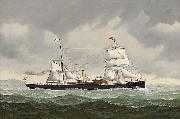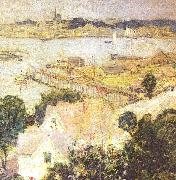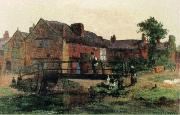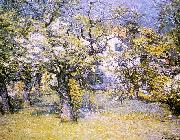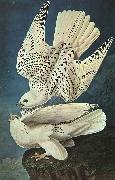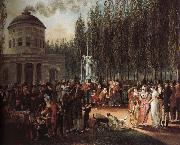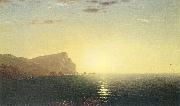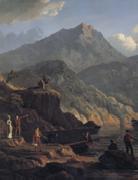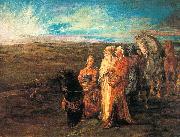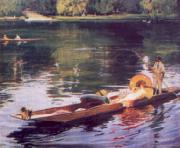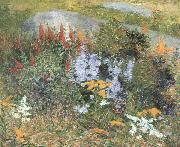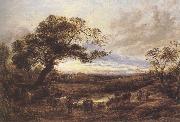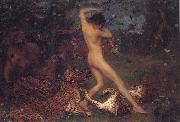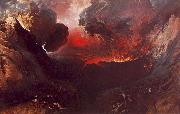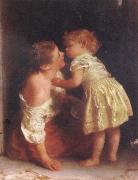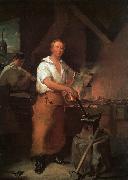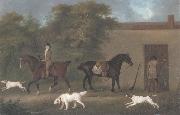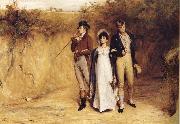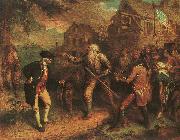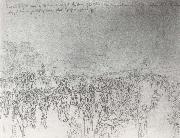|
|
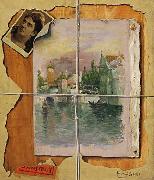 |
John Haberle
|
|
(1856-1933) was a 19th-century American painter in the trompe l'oeil (literally, "fool the eye") style. His still lifes of ordinary objects are painted in such a way that the painting can be mistaken for the objects themselves. He is considered one of the three major figuresetogether with William Harnett and John F. Petoepracticing this form of still life painting in the United States in the last quarter of the 19th century.
Haberle was born in New Haven, Connecticut; his parents were Swiss immigrants. At the age of 14 he left school to apprentice with an engraver. He also worked for many years as an exhibit preparator for the Peabody Museum of Natural History at Yale University. His career as a painter began in 1887.
His style is characterized by a meticulous rendering of two-dimensional objects. He is especially noted for his depictions of paper objects, including currency. Art historian Alfred Frankenstein has contrasted Haberle's work with that of his contemporaries:
Peto is moved by the pathos of used-up things. Haberle is wry and wacky, full of bravado, self-congratulating virtuosity, and sly flamboyance. He works largely within an old tradition, that of the trompe l'oeil still life in painted line ... It is poles away from Harnett's sumptuosity, careful balances, and well-modeled volumes, and is equally far from Peto's sensitivity in matters of tone and hue.
A Bachelor's Drawer (1890-94) is typical of his approach: various papers, including currency, postage stamps, photos, playing cards, tickets, and newspaper clippings, are shown affixed to an essentially planar surface. Other objectseeyeglasses, a comb, a pipe, matches, and so oneare shallow enough in volume so as not to spoil the illusion.
Like Harnett, he was warned by the Secret Service to cease and desist painting paper money, but he continued to do so throughout his years of greatest productivity; examples include The Changes of Time (1888) and Can You Break a Five? (c. 1885). He painted other subjects such as Slate (c. 1895), a bin of peanuts in Fresh Roasted (1887), The Clay Pipe (1889), and the huge Grandma's Hearthstone (1890), in the collection of the Detroit Institute of Arts.
By the turn of the century, problems with his eyes diminished Haberle's activity as an artist. Among his later works are paintings of flowers executed in a looser style, and in 1909 he painted his final trompe l'oeil, the large Night, in the collection of the New Britain Museum of American Art, New Britain, Connecticut. Haberle died in 1933.
|
|
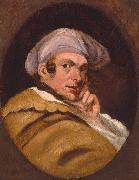 |
John Hamilton Mortimer
|
|
ARA (1740-1779) was a British Neoclassical figure and landscape painter and printmaker, known for romantic paintings set in Italy, works depicting conversations, and works drawn in the 1770s portraying war scenes, similar to those of Salvator Rosa.
Mortimer became President of the Society of Artists in 1774, five years before his death, at age 39.
John Hamilton Mortimer was born on 17 September 1740 at Eastbourne. Not much is known about his family, other than that his father was a customs officer, a dealer in flour and owner of several mills. By 1757, while he was still young, he was studying in London at the Duke of Richmond's Academy. During this time he became a friend of Joseph Wright, a fellow student at the Academy - a friendship which would endure throughout Mortimer's life. Mortimer is also known to have had some professional relationship with the artist Samuel Ireland, who was involved with etching Mortimer's work. At the St Martin's Lane Academy his fellow students included Thomas Jones and William Pars. In 1759 Mortimer won a first prize for a study after Michelangelo's Bacchus and a second prize for a life drawing.
He began to display his works on a regular basis from the early 1760s onwards. He became an active member of the Society of Artists and President of the Society in 1774. |
|
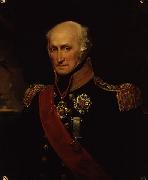 |
John Hayter
|
|
(1800-1895) was an English portrait painter. He was the second son of the miniaturist Charles Hayter and brother of Sir George Hayter, also a portaitist. He entered the Royal Academy schools in 1815, and began to exhibit at the Royal Academy in the same year. He also exhibited work at the British Institution and the Royal Society of British Artists. Hayter established himself during the 1820s, with portraits of notable figures such as the Duke of Wellington and the opera singer, Giuditta Pasta. His portrait drawings, in chalks or crayons, became particularly popular, a number of them being engraved for The Court Album, Portraits of the female aristocracy (1850-57). |
|
|
|
|
|
|
|
|
|
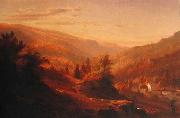 |
John Hermann Carmiencke
|
|
Johann Hermann Carmiencke or John Hermann Carmiencke (born at Hamburg in 1810; died at Brooklyn, New York on 15 June 1867) was a landscape painter and etcher.
|
|
|
|
|
|
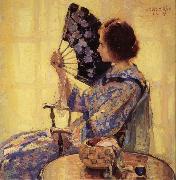 |
John Hubbard Rich
|
|
American,a versatile artist painting portraits, still lifes, figures and florals1878-1955
|
|
|
|
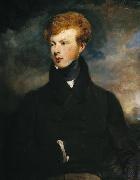 |
John Jackson
|
|
(31 May 1778 - 1 June 1831) was an English painter.
Jackson was born in Lastingham, Yorkshire, and started his career as an apprentice tailor to his father, who opposed the artistic ambitions of his son. However, he enjoyed the support of Henry Phipps, 1st Earl of Mulgrave (1755-1831), who recommended him to the Earl of Carlisle, as well as that of Sir George Beaumont, 7th Baronet - who offered him residence at his own home and ₤50 per annum - and was able to attend the Royal Academy Schools, where he befriended David Wilkie and B. R. Haydon. At Castle Howard, residence of the Earl of Carlisle, he could study and copy from a large collection of paintings. His watercolours were judged to be of uncommon quality. By 1807 his reputation as a portrait painter was assured, and he made the transition to oils steadily, if not easily, regularly forwarding paintings to Somerset House. After a visit to the Netherlands and Flanders with Edmund Phipps in 1816, he accompanied Sir Francis Chantrey on a trip to Switzerland, Rome, Florence and Venice in 1819. In Rome he was elected to the Academy of St Luke. His portrait of Antonio Canova, painted on this trip, was regarded as being outstanding.
Jackson was a prolific portraitist, strongly showing the influence of Sir Thomas Lawrence and Henry Raeburn in his work. His sitters included the Duke of Wellington, the explorer Sir John Franklin and some noted Wesleyan ministers. His 1823 portrait of Lady Dover, wife of George Agar-Ellis, 1st Baron Dover, was widely acclaimed.
He was a Royal Academy student from 9 March 1805, was elected an Associate of the RA on 6 November 1815 and elected a full member on 10 Feb 1817.
John Jackson was married twice - the first marriage was to the daughter of a jeweller, the second to Matilda the daughter of the painter James Ward. He died in St John's Wood, London.
|
|
|
|
|
|
|
|
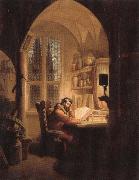 |
john keats
|
|
Born: 31 October 1795
Birthplace: Near London, England
Died: 23 February 1821 (tuberculosis)
Best Known As: Romantic poet who wrote "Ode to a Nightingale"
|
|
|
|
|
|
|
|
|
|
|
|
|
|
|
|
|
|
|
|
|
|
 |
John MacWhirter
|
|
(27 March 1839 Slateford, Water of Leith - 28 January 1911 London) was a Scottish landscape painter.
John was the third of four children. He attended a school in Colinton, and after his father's death was apprenticed to Oliver & Boyd, booksellers in Edinburgh. He stayed there for only a few months and then in 1851 enrolled at the Trustees Academy under Robert Scott Lauder and John Ballantyne (1815-97). He spent long periods sketching and studying nature outdoors. His first painting to be exhibited at the Royal Scottish Academy at age 14, was 'Old Cottage at Braid'. In 1880, he was made an Honorary Member of the Royal Scottish Academy. Exploring and painting abroad he visited Italy, Sicily, Switzerland, Austria, Turkey, Norway and the U.S.A. - the Alps being a great inspiration. He moved to London in 1867 and on 4 May 1893 was elected a Royal Academician.
MacWhirter specialised in romantic landscapes with a great fondness for trees, spending much time in the hilly countryside of Perthshire. Initially, under the influence of John Everett Millais, he experimented with the detailed images of the Pre-Raphaelites, but later adopted a more sweeping style. With John Pettie he illustrated The Postman's Bag (Strahan, 1862), and Wordsworth's Poetry for the Young (Strahan, 1863). |
|
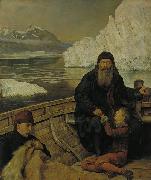 |
John Maler Collier
|
|
(27 January 1850 - 11 April 1934), called 'Jack' by his family and friends, was a leading English artist, and an author. He painted in the Pre-Raphaelite style, and was one of the most prominent portrait painters of his generation. Both his marriages were to daughters of Thomas Henry Huxley. He studied painting at the Munich Academy where he enrolled on 14 April 1875 (Register: 3145) at the age of 25.
Collier was from a talented and successful family. His grandfather, John Collier, was a Quaker merchant who became a Member of Parliament. His father (who was a Member of Parliament, Attorney General and, for many years, a full-time judge of the Privy Council) was created the first Lord Monkswell. He was also a member of the Royal Society of British Artists. John Collier's elder brother, the second Lord Monkswell, was Under-Secretary of State for War and Chairman of the London County Council.
Collier's first wife, Marian Huxley, 1883In due course, Collier became an integral part of the family of Thomas Henry Huxley PC, sometime President of the Royal Society. Collier married two of Huxley's daughters and was "on terms of intimate friendship" with his son, the writer Leonard Huxley. Collier's first wife, in 1879, was Marian (Mady) Huxley. She was a painter who studied, like her husband, at the Slade and exhibited at the Royal Academy and elsewhere. After the birth of their only child, a daughter, she suffered severe post-natal depression and was taken to Paris for treatment where, however, she contracted pneumonia and died in 1887.
In 1889 Collier married Mady's younger sister Ethel Huxley. Until the Deceased Wife's Sister's Marriage Act 1907 such a marriage was not possible in England, so the ceremony took place in Norway. Collier's daughter by his first marriage, Joyce, was a portrait miniaturist, and a member of the Royal Society of Miniature Painters. By his second wife he had a daughter and a son, Sir Laurence Collier KCMG, who was the British Ambassador to Norway 1941-51.
|
|
|
|
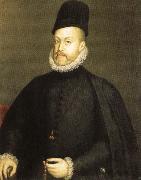 |
john masefield
|
|
(born June 1, 1878, Ledbury, Herefordshire, Eng. ?? died May 12, 1967, near Abingdon, Berkshire) English poet. He went to sea in his youth, then lived precariously for several years in the U.S. before settling in London. He is best known for his poems of the sea, Salt-Water Ballads (1902, including "Sea Fever" and "Cargoes"), and for his long narrative poems, such as The Everlasting Mercy (1911), containing phrases of colloquial coarseness that were unknown in earlier 20th-century English verse. After he became poet laureate in 1930, his poetry became more austere. He also wrote adventure novels, sketches, and works for children.
|
|
|
|
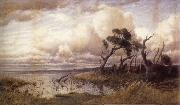 |
John Mather
|
|
Australian painter, etcher and teacher.
1848-1916
|
|
|
|
|
|
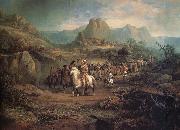 |
John Mix Stanley
|
|
A famous painter of Indians and Indian scen .
American , 1814-1872 |
|
|
|
|
|
|
|
|
|
|
|
|
|
|
|
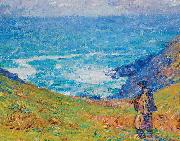 |
John Peter Russell
|
|
(16 June 1858 -22 April 1930) was an Australian impressionist painter.
John Peter Russell was born at the Sydney suburb of Darlinghurst, the eldest of four children of John Russell, a Scottish engineer, his wife Charlotte Elizabeth, nee Nicholl, from London. J. P. Russell was a nephew of Sir Peter Nicol Russell. After his father's death J. P. Russell enrolled at the Slade School of Fine Art, University College, London, on 5 January 1881 and studied under Alphonse Legros for three years.Russell then went to Paris to study painting under Fernand Cormon. (His fellow students there included Henri de Toulouse-Lautrec and Émile Bernard.) Russell was a man of means and having married a beautiful Italian, Mariana Antoinetta Matiocco, he settled at Belle Île off the coast of Brittany, where he established an artists' colony. He would have 11 children with Matiocco, of whom six survived.
John Peter Russell: Vincent van Gogh, 1886, Van Gogh Museum, AmsterdamRussell had met Vincent van Gogh in Paris and formed a friendship with him. Van Gogh spoke highly of Russell's work, and after his first summer in Arles in 1888 he sent twelve drawings of his paintings to Russell, to inform him about the progress of his work. Claude Monet often worked with Russell at Belle Île and influenced his style, though it has been said that Monet preferred some of Russell's Belle Île seascapes to his own. |
|
|
|
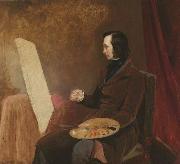 |
John Phillip
|
|
(April 19, 1817-1867) was a Victorian era painter best known for his portrayals of Spanish life. He was nicknamed "Spanish Phillip".
Born into a poor family in Aberdeen in Scotland, Phillip's artistic talent was recognised at an early age. His education at the Royal Academy of Arts was paid for by a wealthy patron. While at the academy Phillip became a member of The Clique a group of aspirant artists organised by Richard Dadd. The Clique considered themselves to be followers of Hogarth and Wilkie. Phillip's own career was to follow that of fellow-Scot Wilkie very closely, beginning with carefully detailed paintings depicting the lives of Scottish crofters, and moving on to much more broadly painted scenes of Spanish life influenced by Murillo and Velezquez.
Phillip's early works tended to depict pious Scots families, but in 1851, after he was advised to travel to southern Europe for his health he visited Spain. Thereafter he concentrated on Spanish subjects. The first of these, The Letter Writer, Seville indicated the influence of Pre-Raphaelitism, a movement he had previously opposed, along with most other members of The Clique, despite his friendship with Millais, one of its leaders. He was so influenced by his travels that he advised other artists to do the same. Some artists, such as Edwin Long, took this advice and were similarly inspired.
In the late 1850s and 1860s Phillip's style became much broader and more painterly, in line with Millais's late work. Phillip's two most important paintings in these years were The Early Career of Murillo (1864) and La Gloria (1865, National Gallery of Scotland). The first depicted the young Murillo drawing his art from Spanish street-life; the second portrayed a Spanish wake for a dead child.
Phillip married Richard Dadd's sister, but like her brother she became insane. Phillip died of a stroke while visiting William Powell Frith. Phillip's self-portrait, "The Evil Eye", commissioned by his close friend Patrick Allan-Fraser, is in Hospitalfield House in Arbroath along with portraits of other members of The Clique.
|
|
 |
John Ponsford
|
|
(1790- 1870 )
painted Portrait of a gentleman. Signed and dated Ponsford 1842 |
|
|
|
|
|
|
|
|











